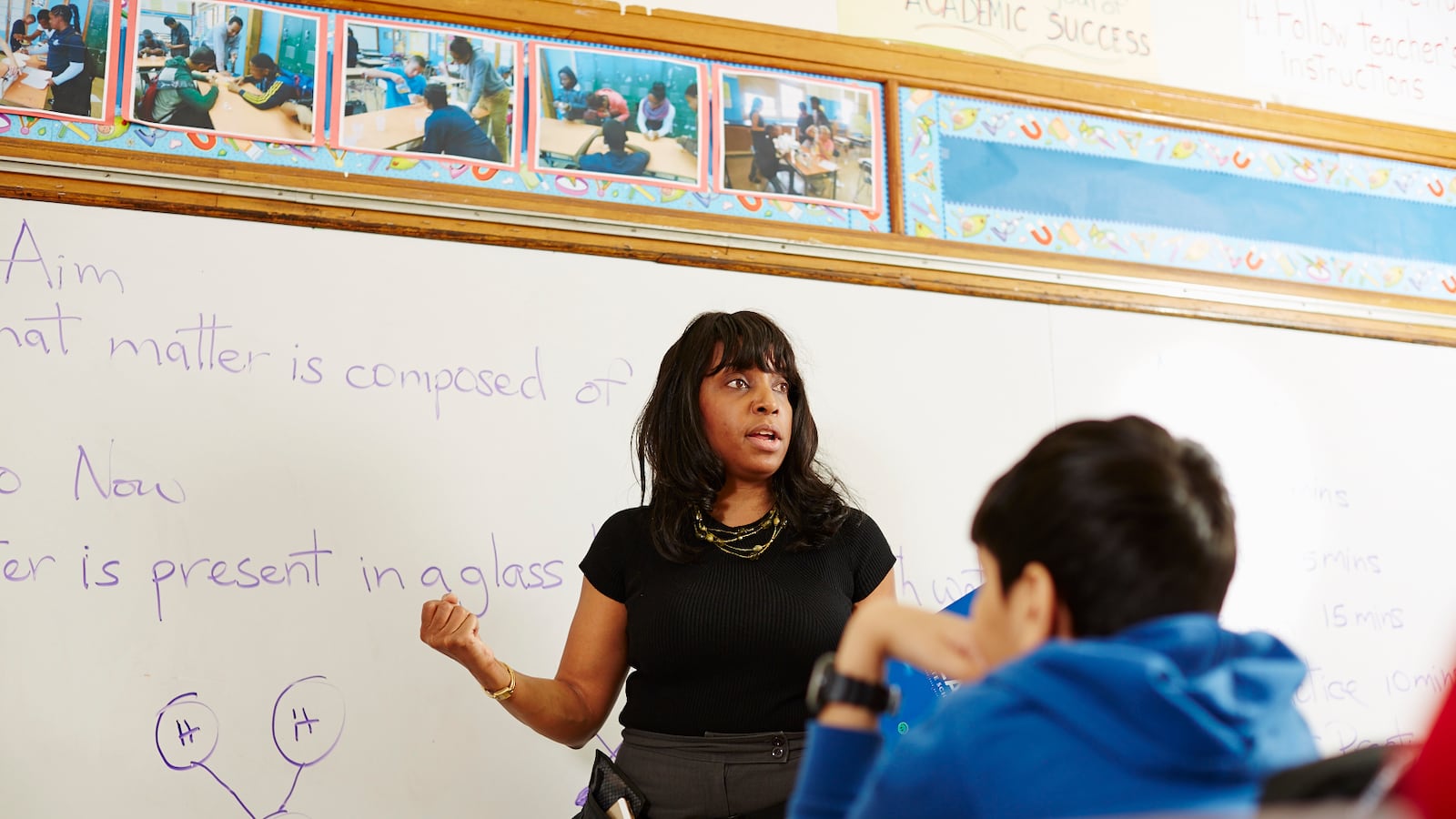This year’s state test results showed the city school system creeping forward, but they also told another story: the city’s new school-improvement program has a grueling climb ahead of it.
Schools were chosen for the “Renewal” turnaround program largely because of their low test scores, and while many made minor gains and some pulled significant shares of students out of the lowest score bracket this year, their results remained strikingly far below the city average, according to testing data released Wednesday.
Mayor Bill de Blasio has promised to revamp rather than replace those schools, whose troubles predate his administration. The latest test results underscore just how ambitious a three-year turnaround plan is, especially since year one was mainly devoted to helping the Renewal schools craft improvement plans. As de Blasio tries to pull off this feat, skeptical state lawmakers will be scrutinizing the program’s progress and the state education department will be poised to seize control of struggling schools that don’t rapidly improve.
“The Renewal schools obviously are schools that didn’t get enough investment in the past and had a lot of problems,” de Blasio said Wednesday. “We expect that it’s going to take a lot of work and investment to get them where they need to be, but we’re confident they will move.”
The average English pass rate for the 63 Renewal schools where students took the grades 3-8 state exams this year was 7.5 percent, compared to the city’s 30 percent average. In math, the Renewal pass rate was about 7 percent, compared to 35 percent for the city. Only about a quarter of schools had English pass rates in the double digits (the highest rate was 18 percent), while just one-fifth saw double digit pass rates in math (with a high of 21 percent).
Though extremely low, those average Renewal pass rates reflect increases over 2014: In English, a 1.4-point boost, and 1.1 points in math. Forty-one schools made slight English proficiency gains, and 36 saw bumps in math. At the same time, 20 schools saw their English pass rates slip slightly, as did 27 schools in math.
Renewal schools have much lower test scores than the city average, but they also enroll more students who tend to score poorly. The 94 schools in the program serve larger shares of non-native English speakers, students with disabilities, and students in temporary housing, as well as more black and Hispanic students, than the city average, according to an analysis by the city’s Independent Budget Office. (They are also more likely to have low-rated teachers and funding shortfalls, which de Blasio has tried to address by boosting their budgets.)
Considering how far behind many students are when they enter these schools, another measure of their progress is how many students they can push out of the bottom score zone (Level 1 out of four). In both subjects, roughly half of the schools managed to shrink their share of bottom scores. P.S. 154 in the Bronx managed to downsize its group of Level 1 students in English by 17 percentage points, while that borough’s Academy for Personal Leadership and Excellence reduced its Level 1 math cohort by 14 percentage points.
In meetings with Renewal school leaders, education department officials have said such progress is an important accomplishment. Chancellor Carmen Fariña suggested that during the city’s test-score release announcement yesterday when she explained that pushing students slightly forward in reading can have a ripple effect.
“If you can’t read, you can’t do social studies, you can’t do science, you can’t do anything else,” she said. “So being able to move those Level 1’s to Level 2’s is crucial.”
That step-by-step approach to improvement is reflected in the goals the city gave each Renewal school in May and June. An elementary school was told to raise its students’ average math test proficiency score on the Level 1 to 4 scale to a 2.14 by 2016 — a .03 bump from the school’s 2014 average, according to the principal. A middle school was told to increase its students’ average English score by .15 points on that four-point scale by 2017, according to a goal-setting document obtained by Chalkbeat.
“We were pleased that they were as low as they were,” said an administrator from that middle school, referring to the goals, which he said seemed reasonable since the school has many students still learning English.
Whether the state officials keeping close tabs on the Renewal program will be content with modest gains, or whether they will expect those schools to make greater strides toward the city averages, remains to be seen.
In op-ed last week expressing concern over de Blasio’s handling of the city school system, State Senate Majority Leader John Flanagan said he had “unanswered questions” about the Renewal program. He added that while the city’s schools should set up every student to succeed, “I have serious doubts about whether that mission is being fulfilled.” (Flanagan, a Republican, has sparred before with de Blasio, a Democrat who tried to help his party take control of the senate.)
Meanwhile, under a recent state law, 50 of the Renewal schools have between one and two years to make significant improvements. If they fail to post adequate gains, then the state will hand over control of the schools to an outside manager.
Speaking at an education conference Thursday that Fariña also attended, state Board of Regents Chancellor Merryl Tisch said the city and its partners faced a choice with its bottom-ranked schools.
“I think they’ve got to make a decision,” she said. “How long do you stick with a failing school?”
Sarah Darville and Stephanie Snyder contributed reporting.

